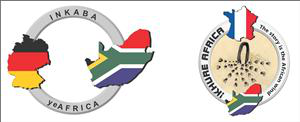Speaker
Mr
Gideon Brunsdon
(Nelson Mandela Metropolitan University)
Description
Previous studies of the Bokkeveld Group focussed mostly on the sedimentation and sedimentary features of this group with a view to interpreting the depositional environment. This study aims to contribute new information on the structural features of the Bokkeveld Group north-west of Uitenhage in the Eastern Cape, where there is evidence of folding and pervasive thrust faulting, similar to that occurring in the under- and overlying groups of the Cape Supergroup.
Field work to date shows that predominantly argillaceous units comprising siltstones, mudstones, with lesser arenites and thin conglomerate beds making up the Bokkeveld Group conformably overly the Table Mountain Group of predominantly arenaceous beds. Both groups have been folded into asymmetric anticlines and synclines, with a prominent, south-dipping pervasive cleavage developed in the Bokkeveld Group. The fissile nature of argillaceous beds on outcrop have required that very careful observations of the all important bedding-cleavage relationship in the field are made so that correct interpretations of facing direction of strata can be applied. Thrust faults showing fore-and backthrusts are present in the Bokkeveld Group, similar to those occurring in the overlying Witteberg Group. These structures are interpreted to have formed during a main deformation phase of the Cape Orogeny, during the Permian.
In places structural orientation data indicate that bedding planes dip predominantly to the Northeast and to the Southwest. Cleavage dips consistently to the Southeast, although the dip of the cleavage varies from steeper to less steep in different formations. A section studies along the Hottentotspoort road revealed that the more arenaceous beds often display folding as the main structural feature, whilst the argillaceous layers display more faulting and small scale folding. Faulting is present throughout the whole section, mostly in the form of south-southwest dipping reverse faults and shallow dipping thrust faults. Strike-slip faulting has also been recorded. Flexure-slip faults occur mainly in the more arenaceous units and are associated with large scale folding in the area.
This study so far indicates that structural characteristics of the Bokkeveld Group have been identified on macro and microscopic scale, and detailed analyses of these structures should reveal valuable information with regard to the deformational history of these rocks. In the field cleavages may easily be mistaken for bedding and this relationship needs to be carefully verified through microscopic studies. A significant emphasis is placed on this aspect to avoid incorrect interpretations in the field. The results of this study will inevitably point to the fact that strata have been disrupted by structures such as folds and thrust faults to the extent that the stratigraphic order of the Bokkeveld Group in this area will have to be re-assessed.
Primary author
Mr
Gideon Brunsdon
(Nelson Mandela Metropolitan University)
Co-authors
Prof.
Maarten de Wit
(NMMU AEON)
Prof.
Peter Booth
(NMMU)

